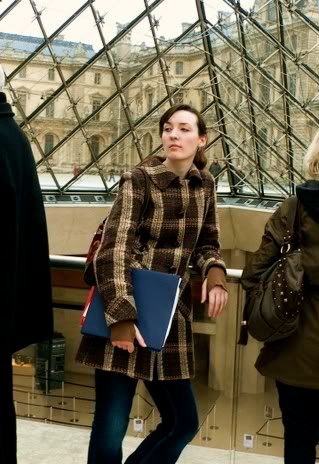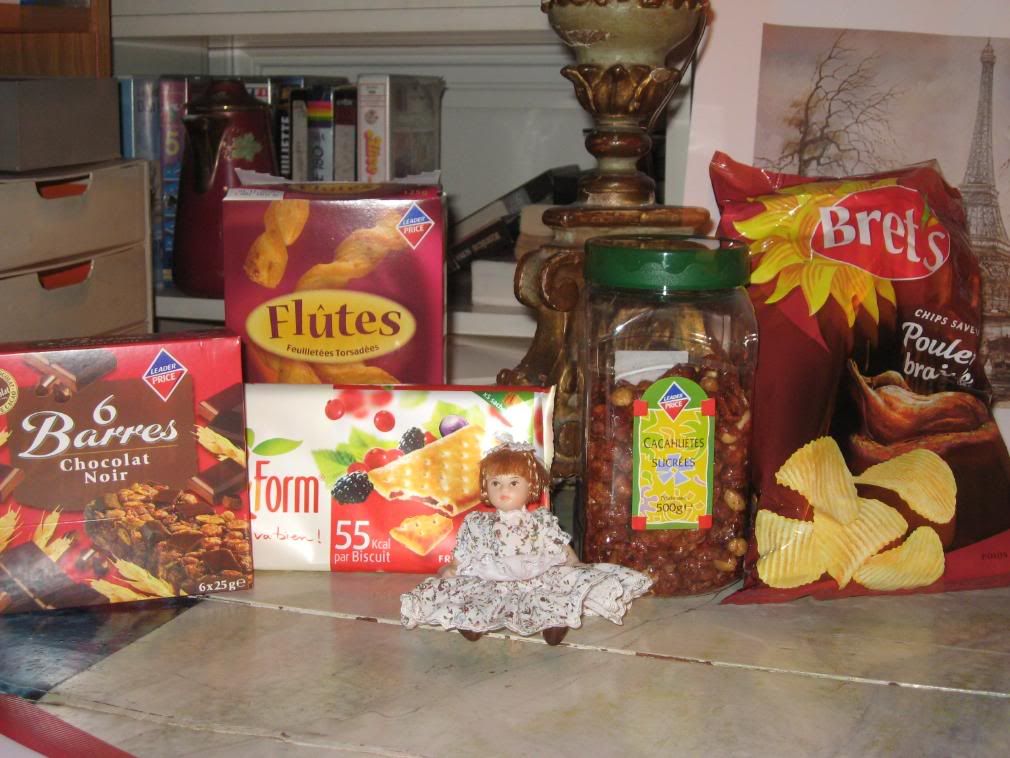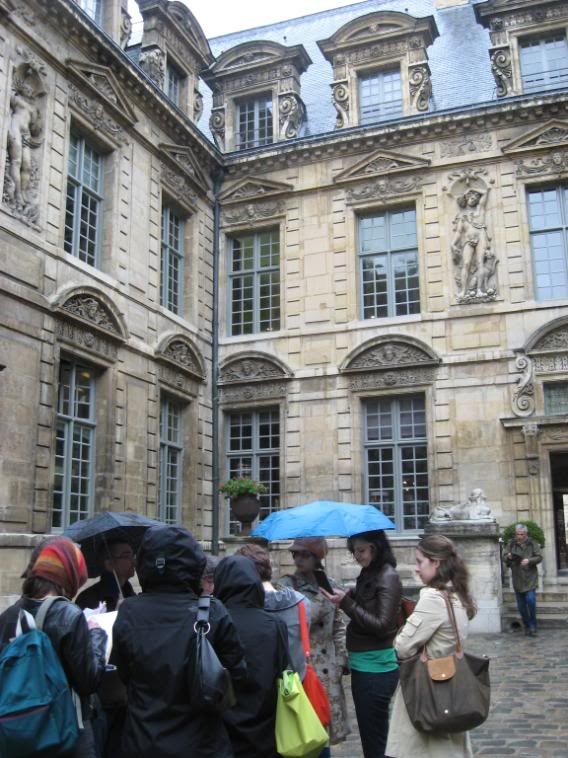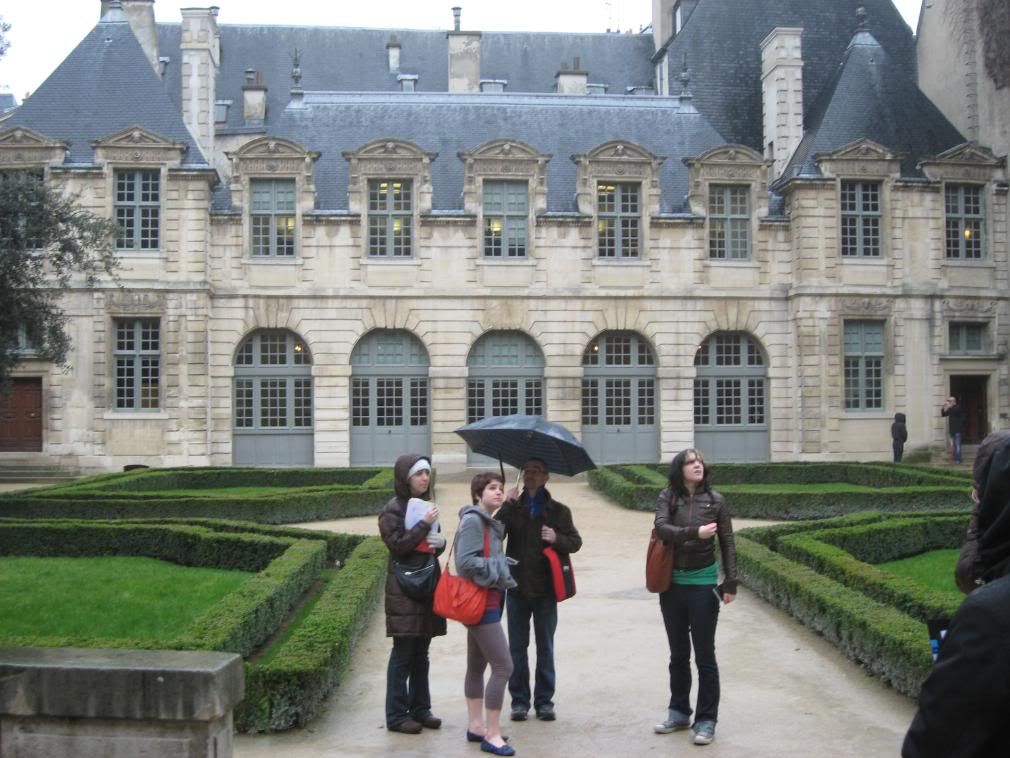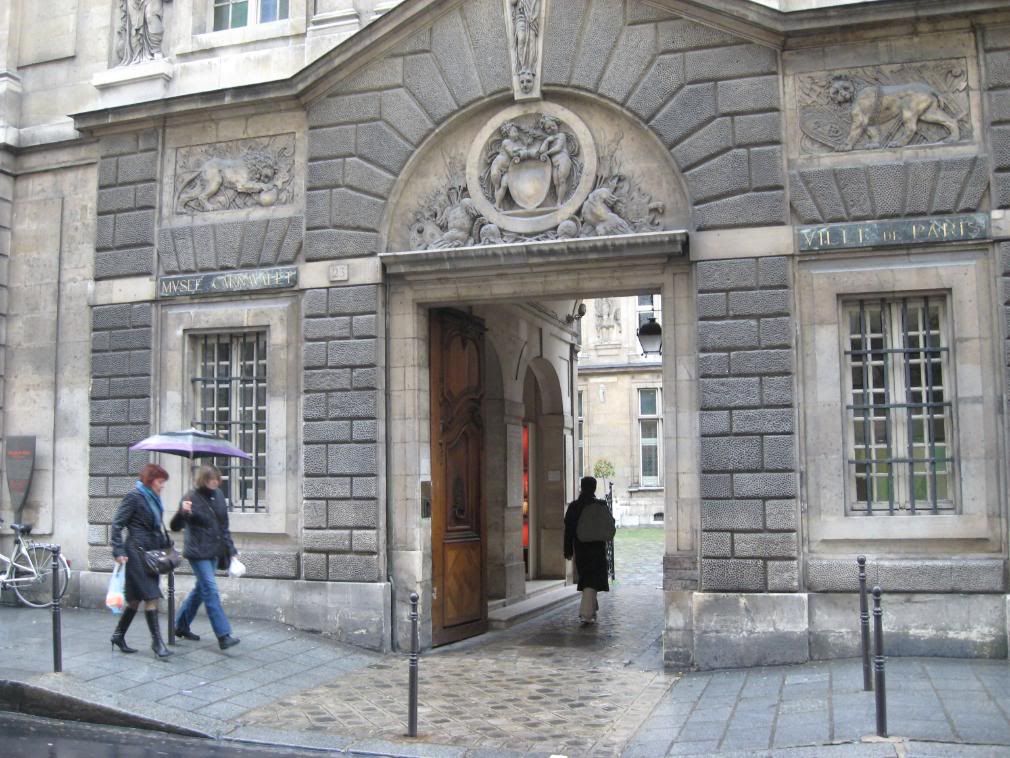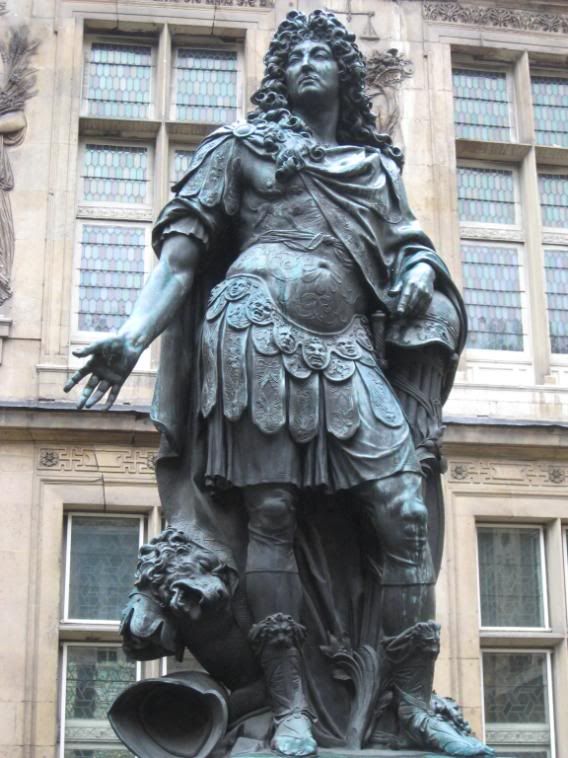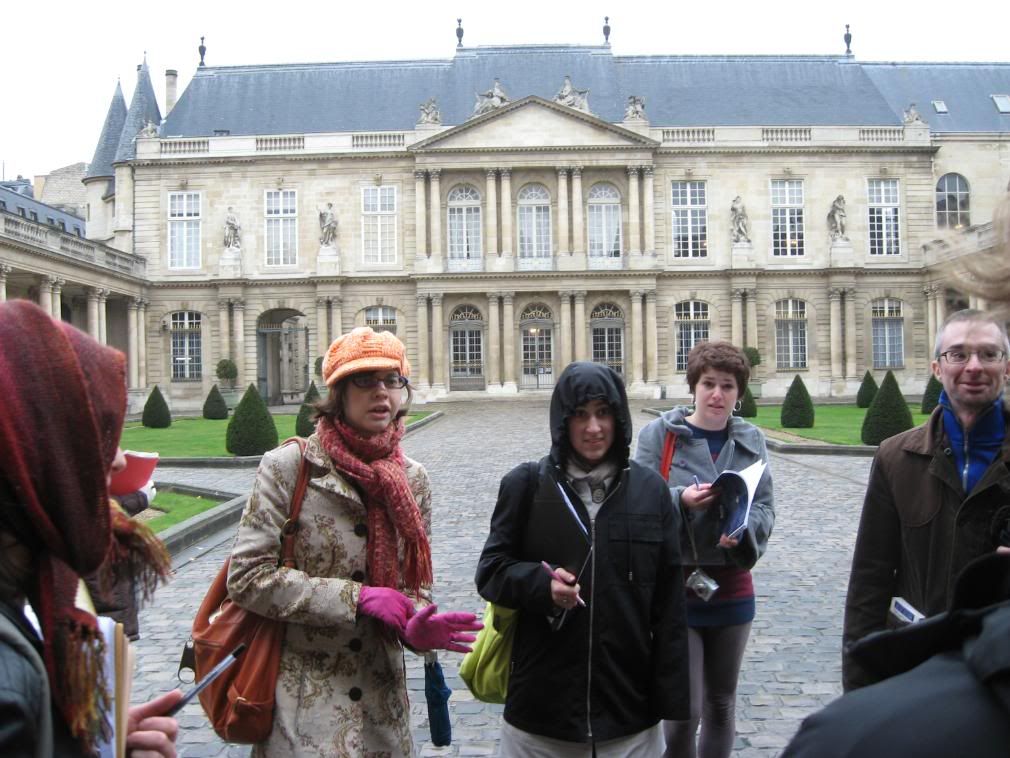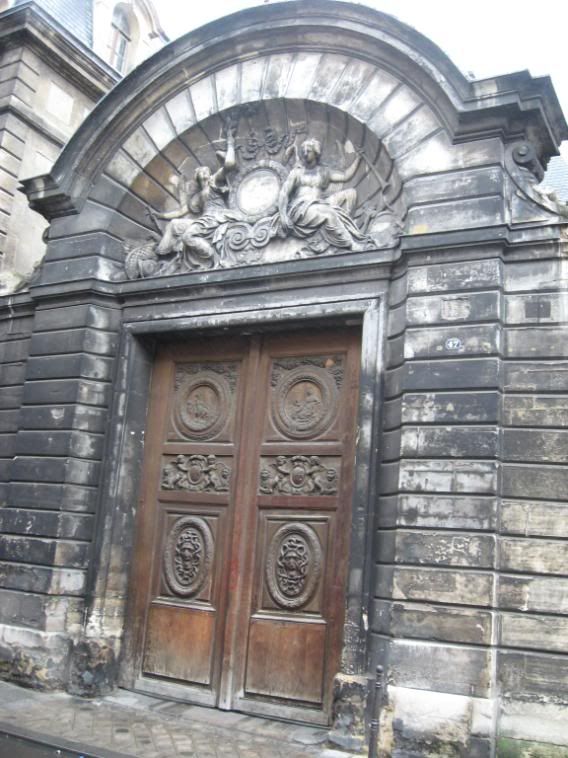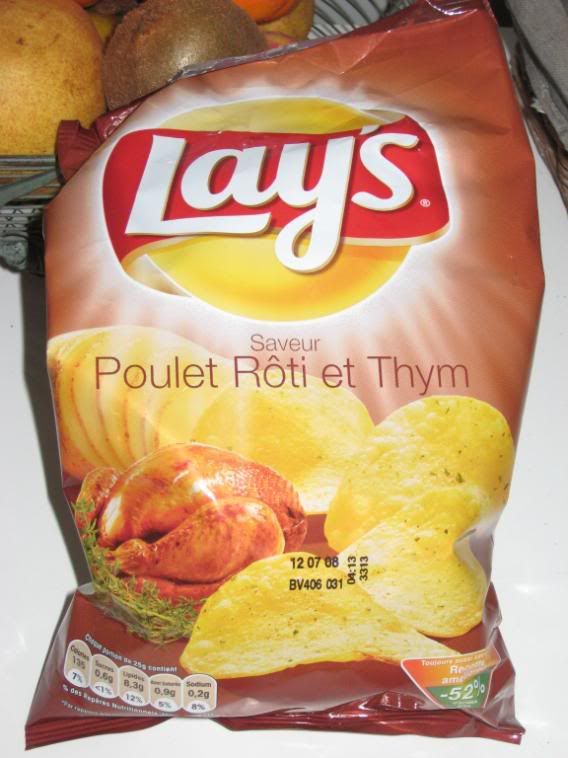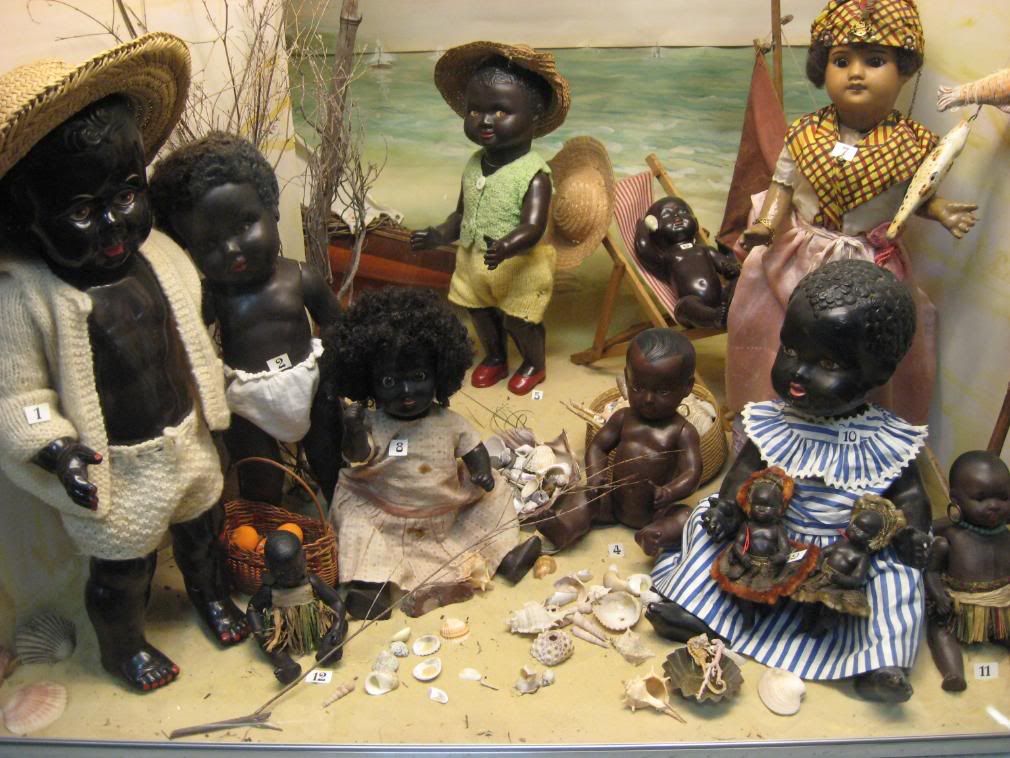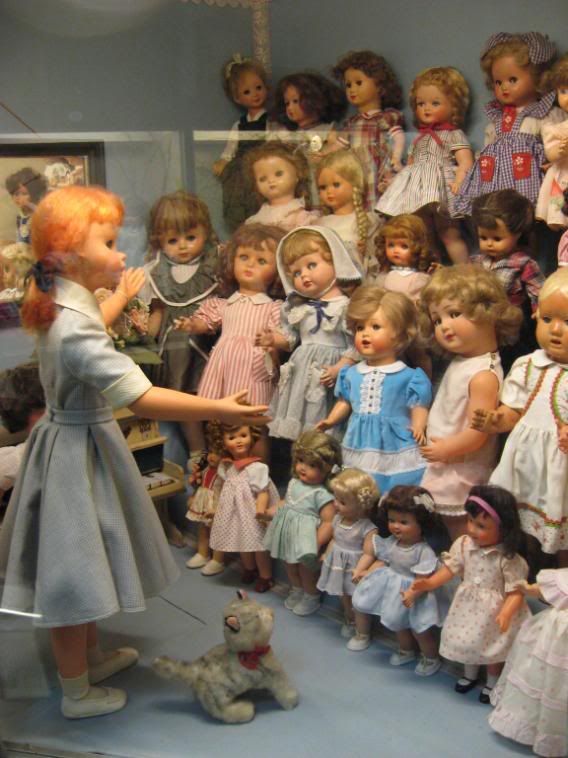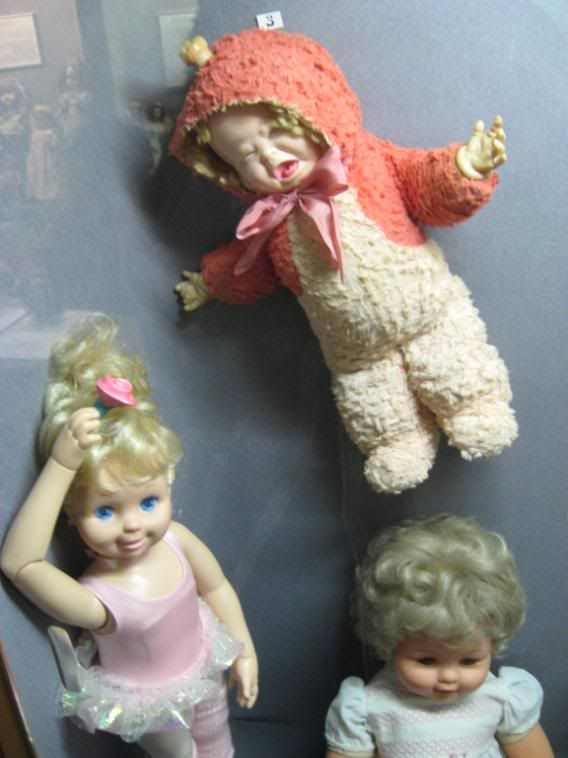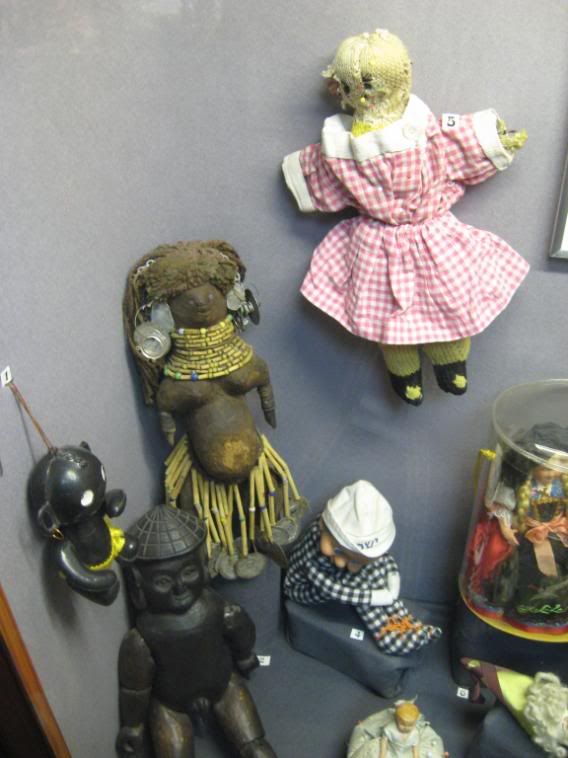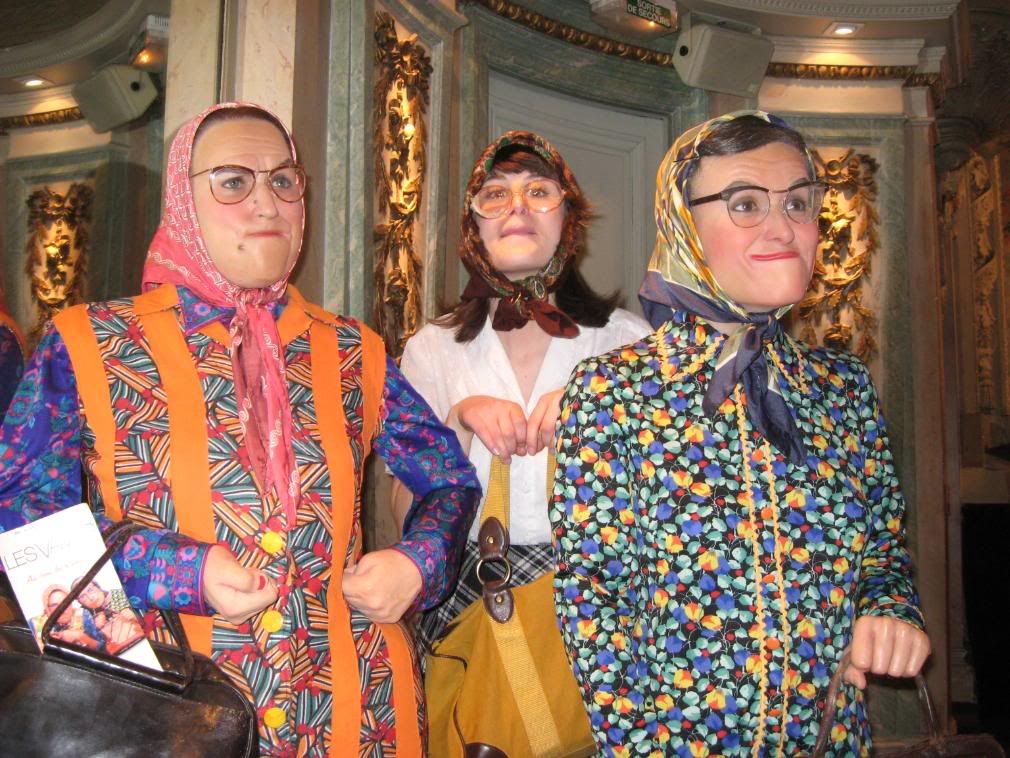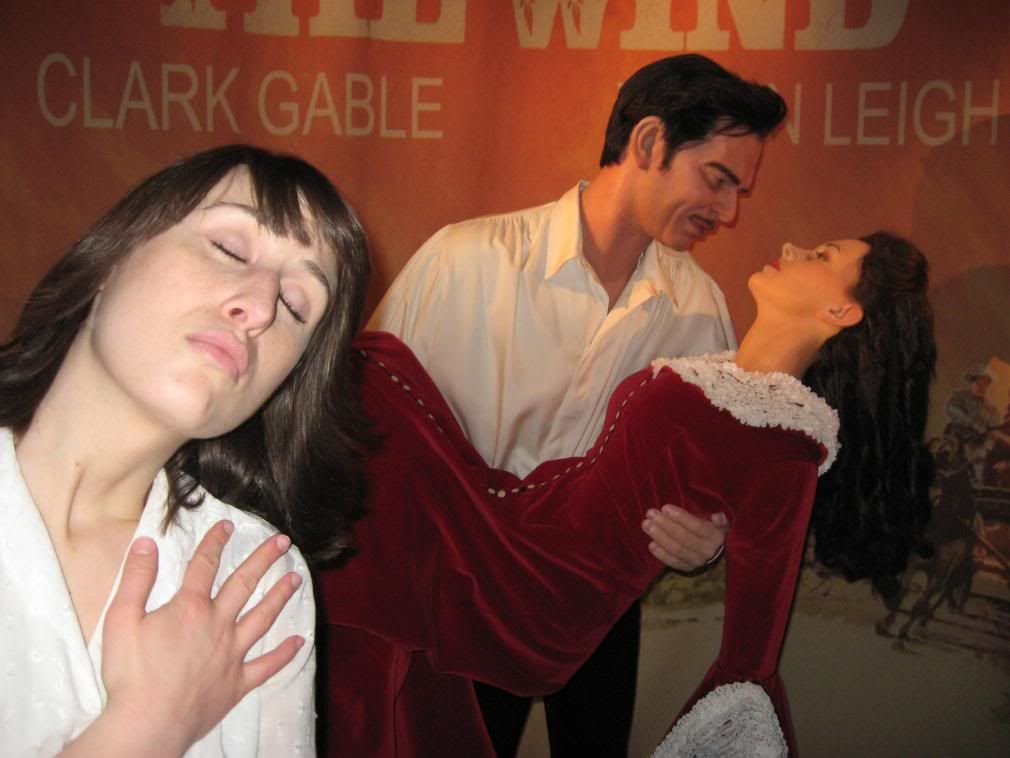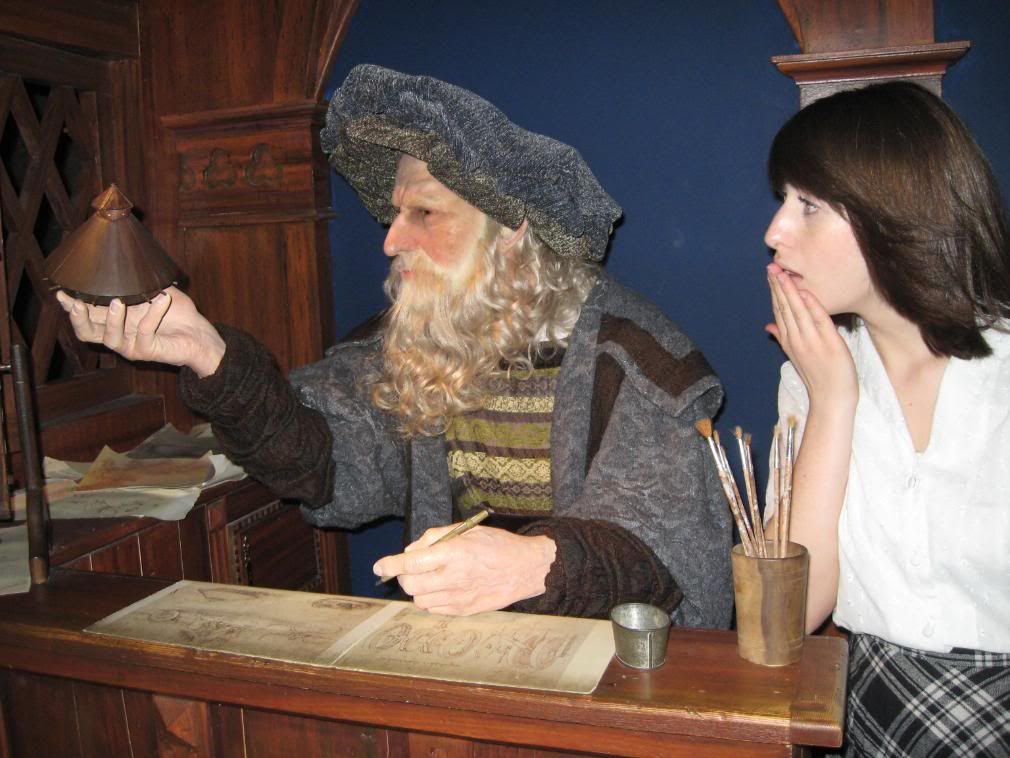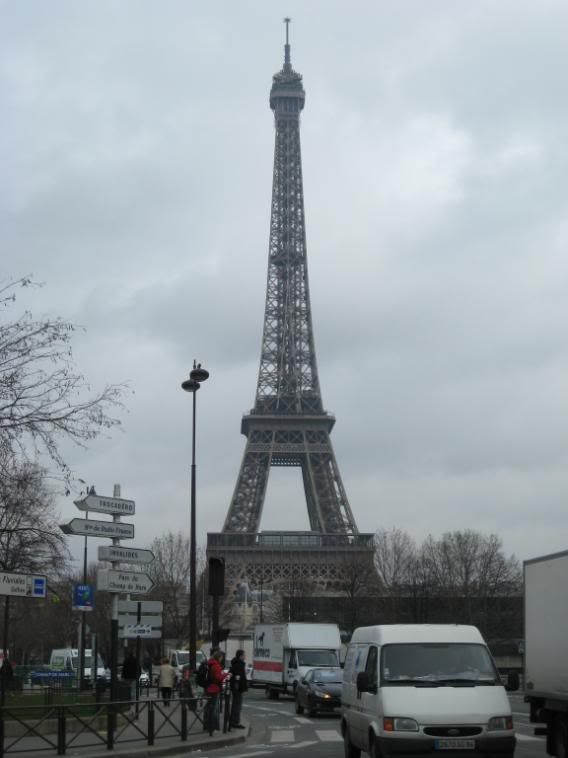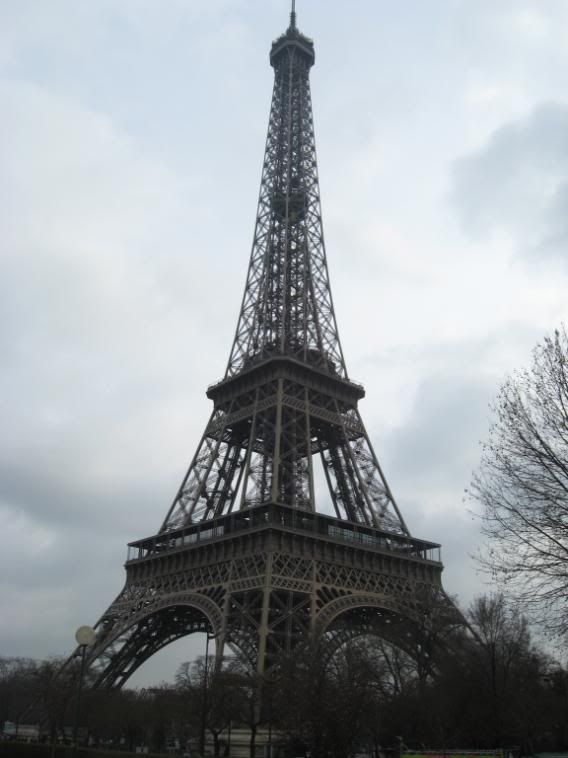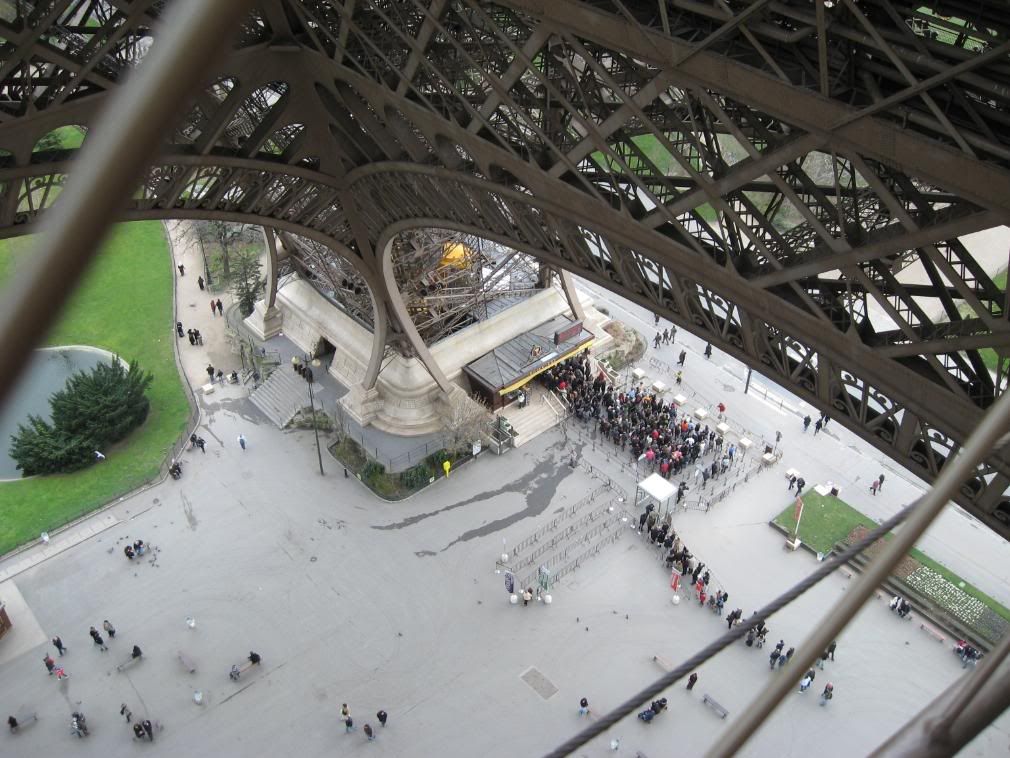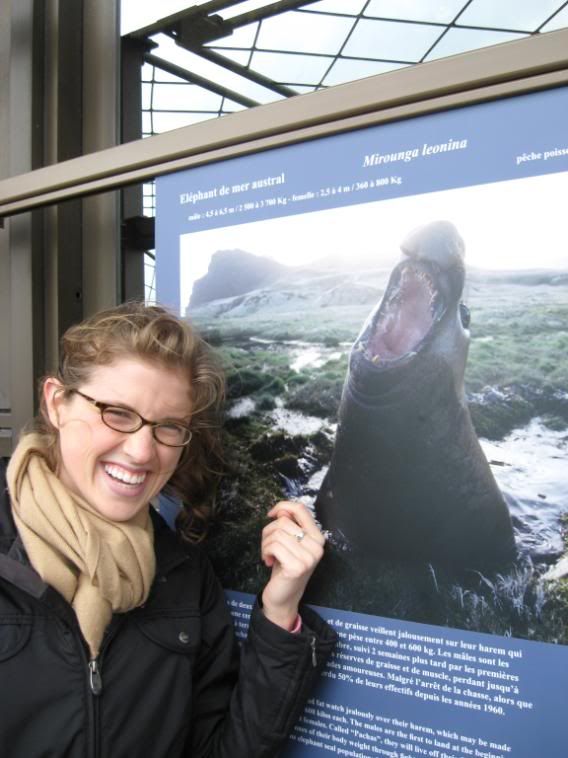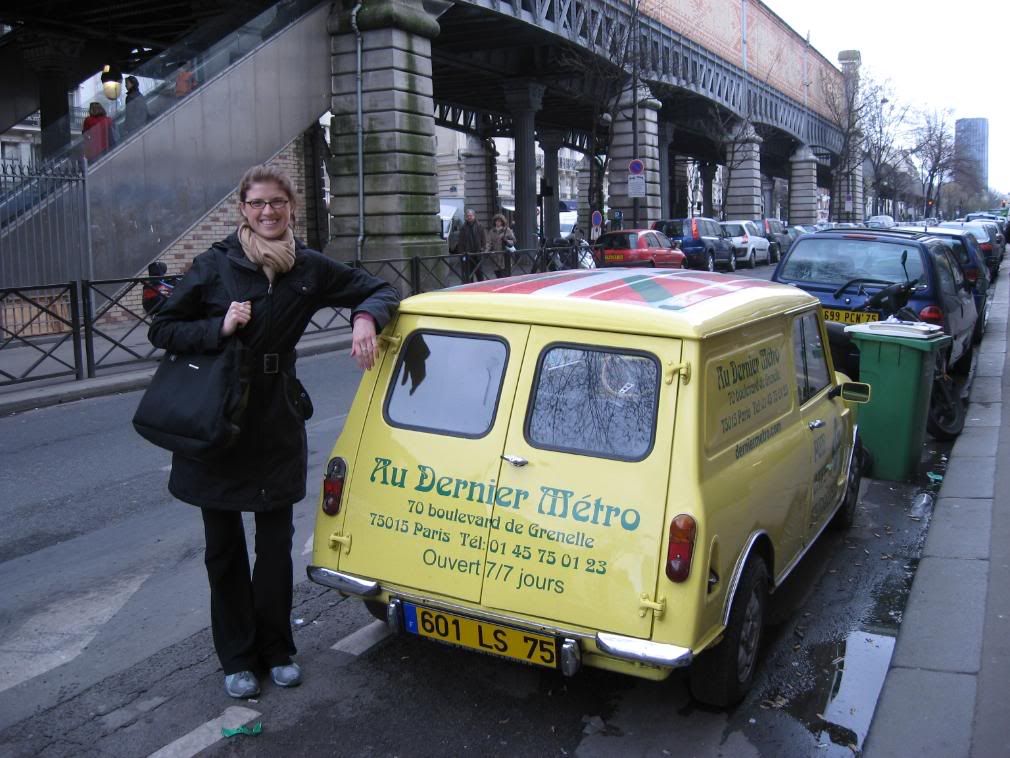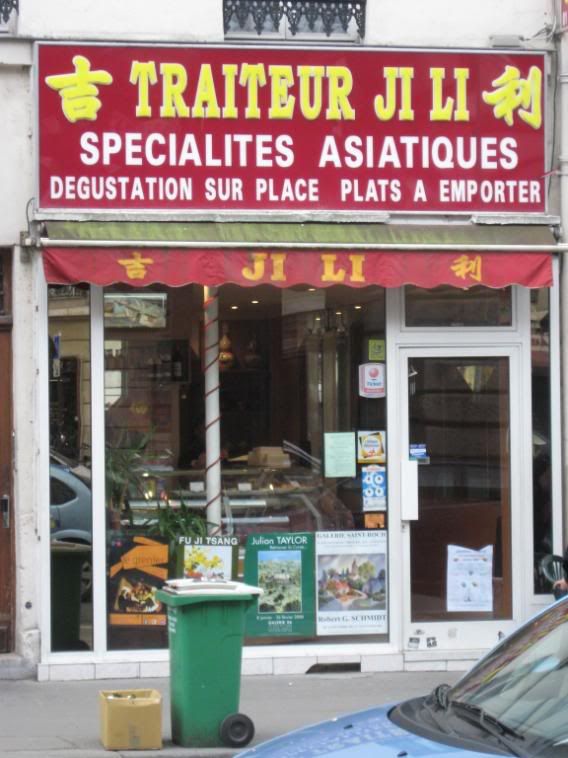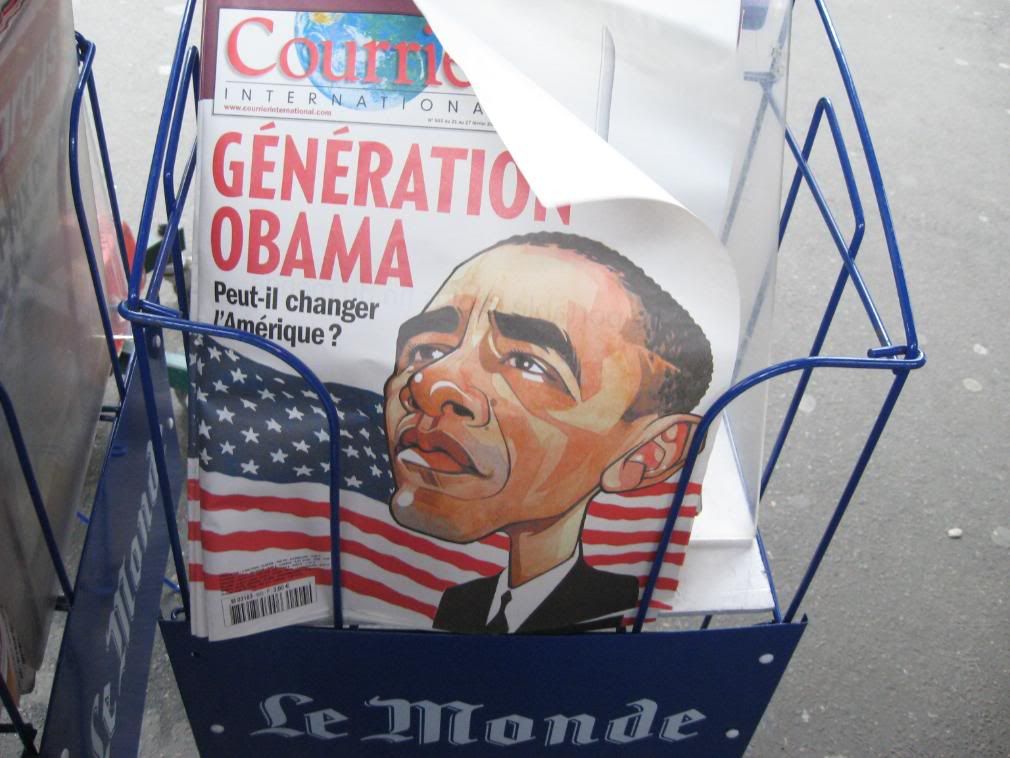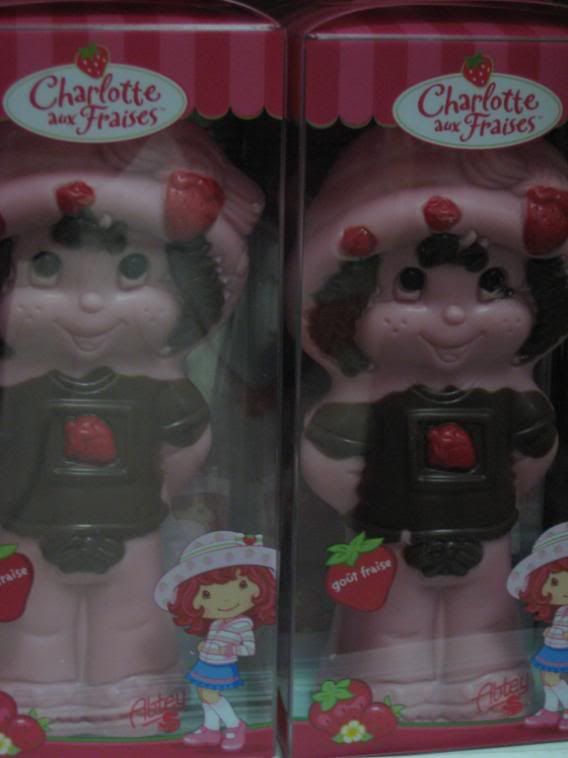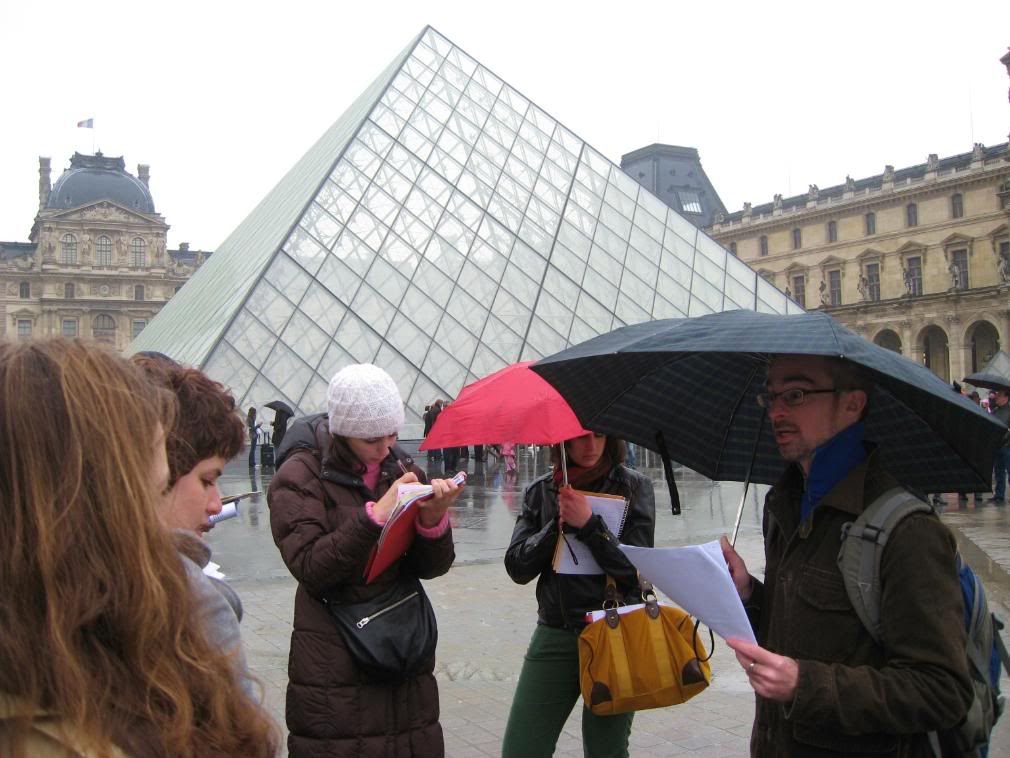
We convene in the central courtyard of the Louvre. The glass pyramid, designed by the Chinese-born American architect I.M. Pei (much to the chagrin of Parisians), was added in the 1980s and serves as the entrance to the museum. Although starkly modern in its use of glass and steel, the addition reflects a sensitivity to the museum's integrity in that its pyramid shape calls to mind the first Egyptian treasures the Louvre held. Also, since the glass is alternately reflective and transparent depending on the weather, visitors' attention is ultimately drawn back to the surrounding architecture of the historic courtyard.
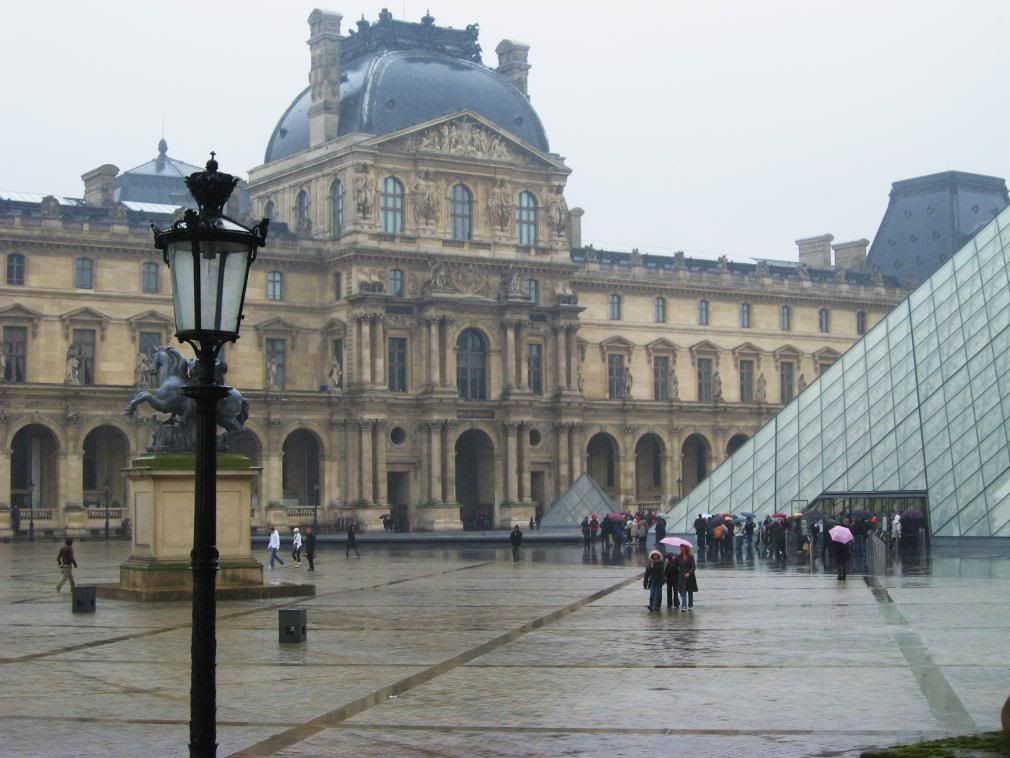
It was kind of a yucky day today, but the Louvre is still pretty in the rain.
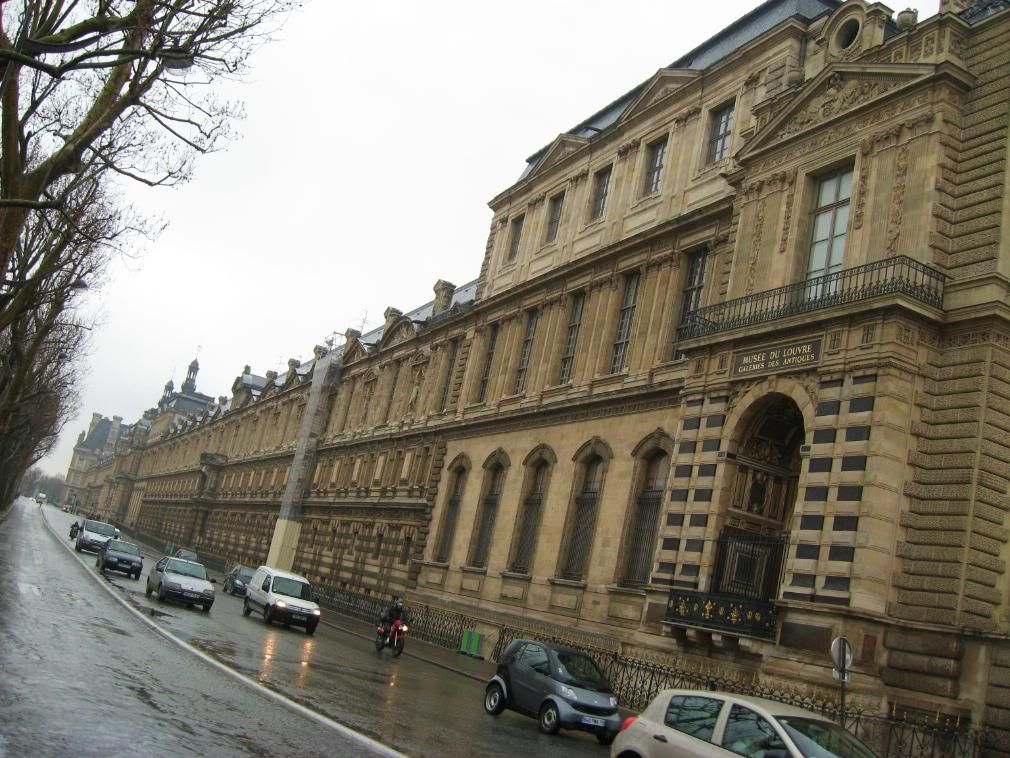
When the construction on the Louvre began, the site was actually in the countryside just outside the city proper of Paris. As the city limits expanded it became more central-- now it's right in the middle of several busy thoroughfares. It's hard to get a picture of a lot of the Louvre at one time because it's ginormous, but here's the part of the facade that bears some of the earliest and most ornate architectural detail.
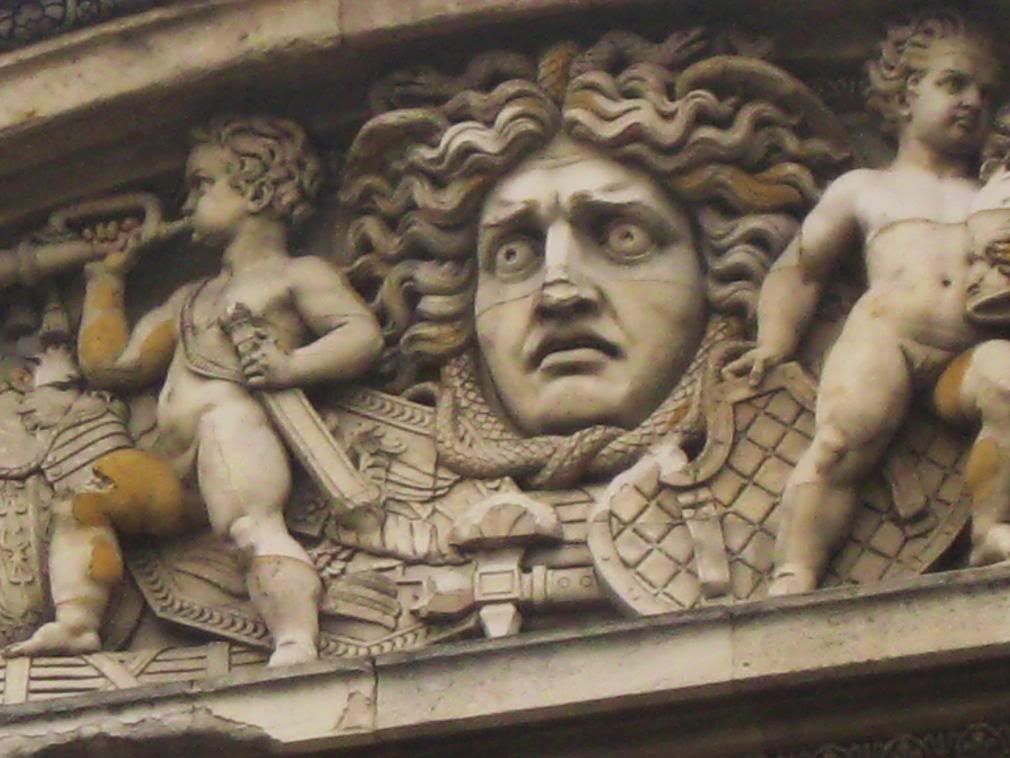
Like this Medusa head! Paul says the popularity of the Medusa in French architecture is probably due to the revived interest in classical Greco-Roman iconography.
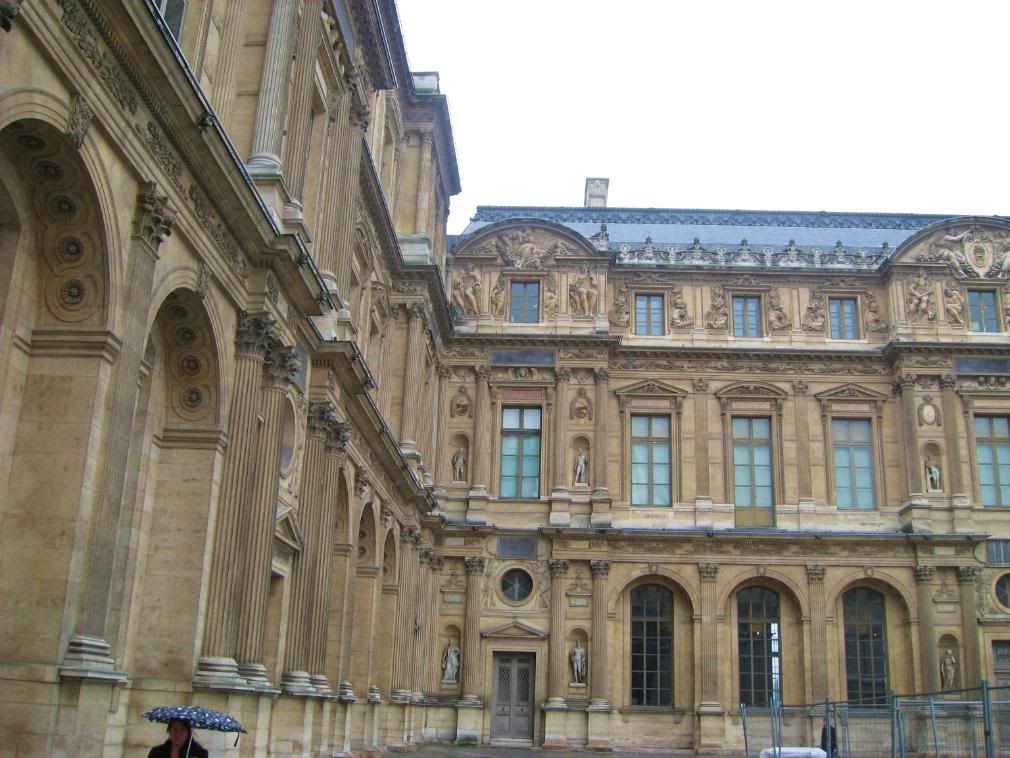
When construction on the Louvre site began in 1190, the intention was to use the structure as a fortress for the protection of Paris during the Crusades. Until the 1980s no one knew that part of the original medieval foundations were still in place underground. This part of the Louvre is built over the site where the original castle stood.
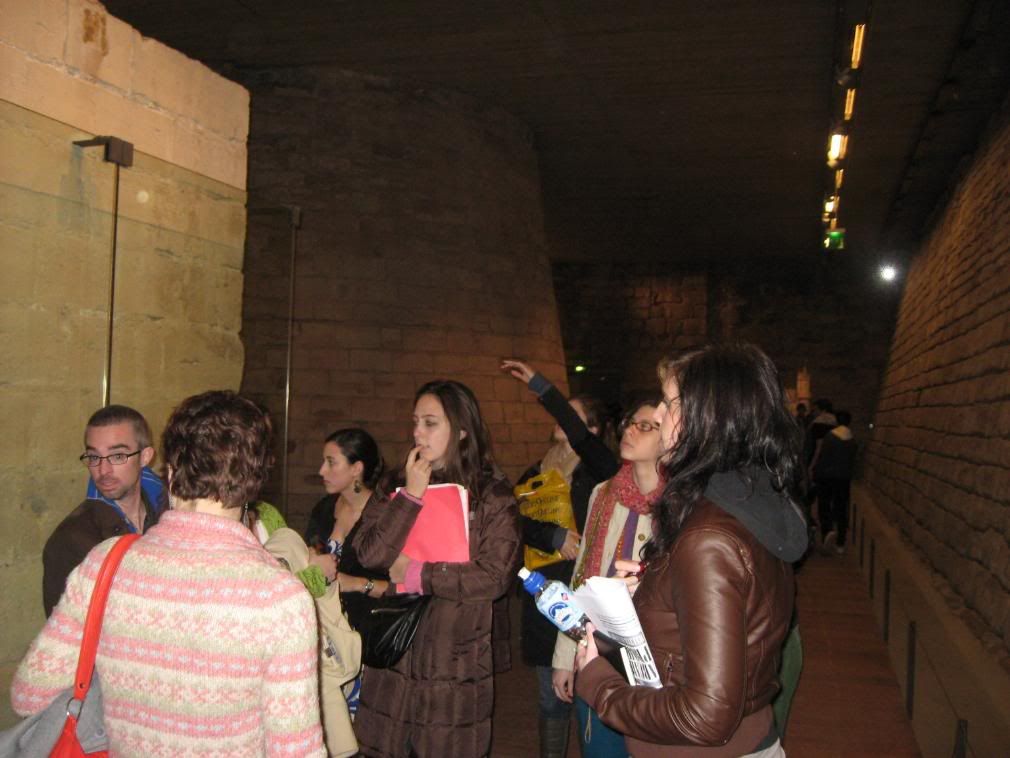
Once inside the Louvre you can tour the remains of the medieval foundations. Here we are in the area that would have been the moat. The glass-protected feature on the left is part of the supports for the original drawbridge.
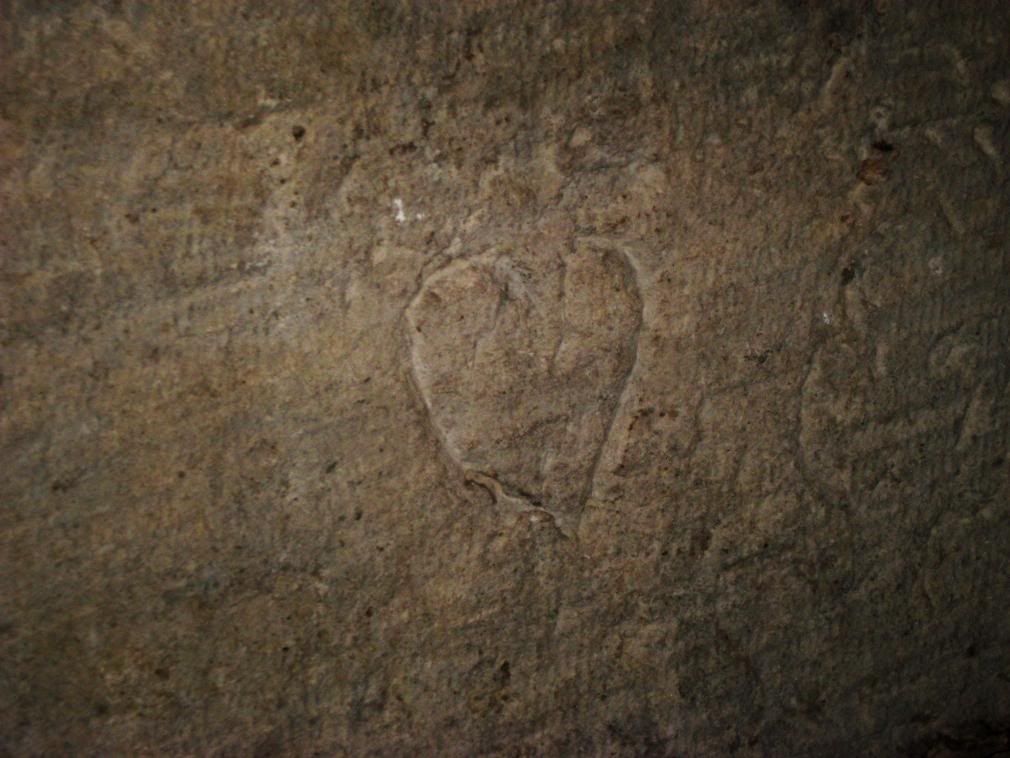
These heart-shaped engravings, found in multiple places on the fortress walls, were made by the original stonemasons. Ancient graffiti!
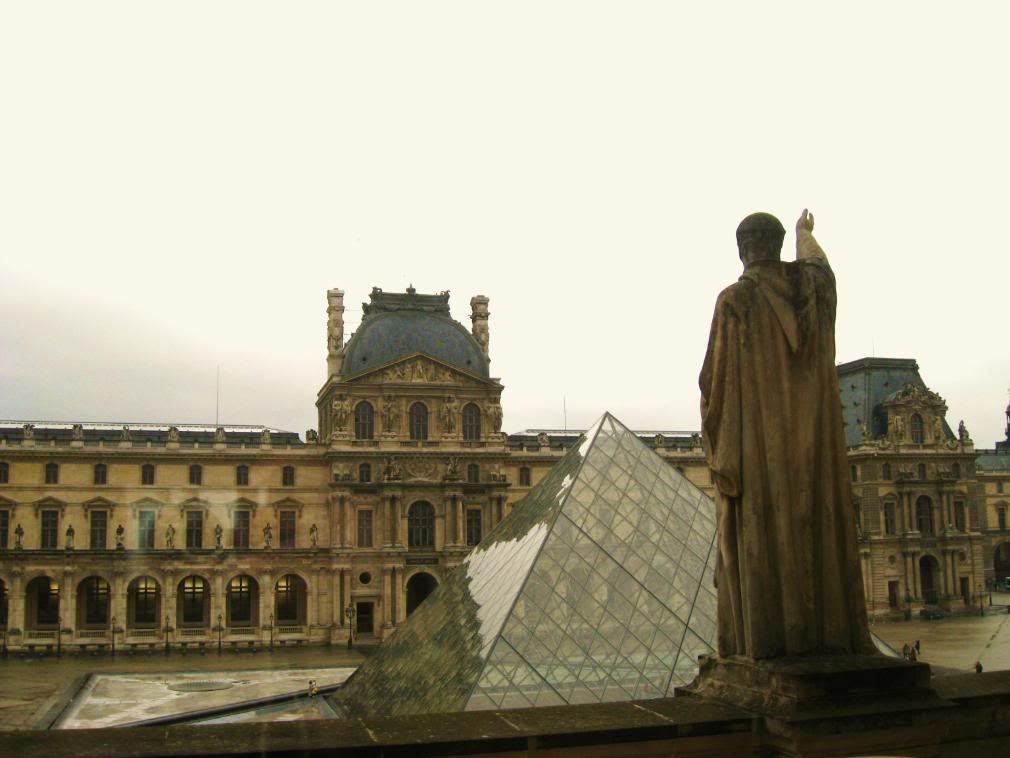
The Louvre was transformed into a palace in the 1350s and housed the kings of France until the mid 1500s, when it underwent renovations to make it less fortressy and more hospitable.
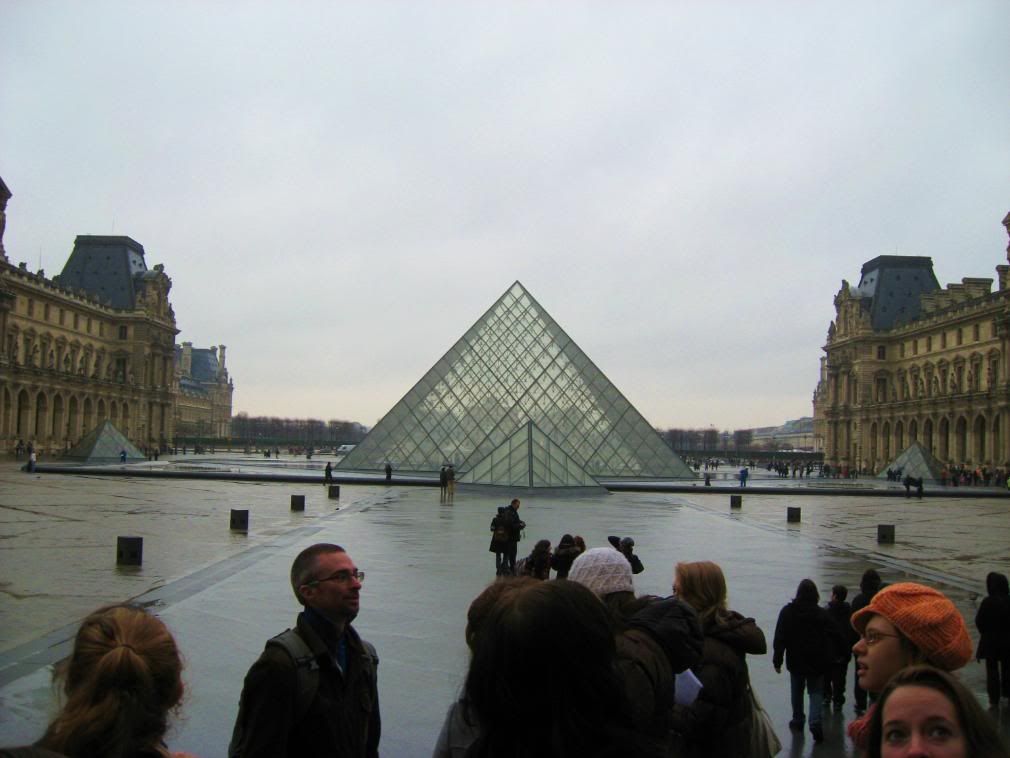
The Louvre courtyard was once fully enclosed; a fourth wing connected those on the left and right in this picture. It was burned down in the 1870s, though, so now the courtyard is only bordered on three sides, affording onlookers a view of the Tuileries garden and even L'Arc de Triomphe, in the distance.
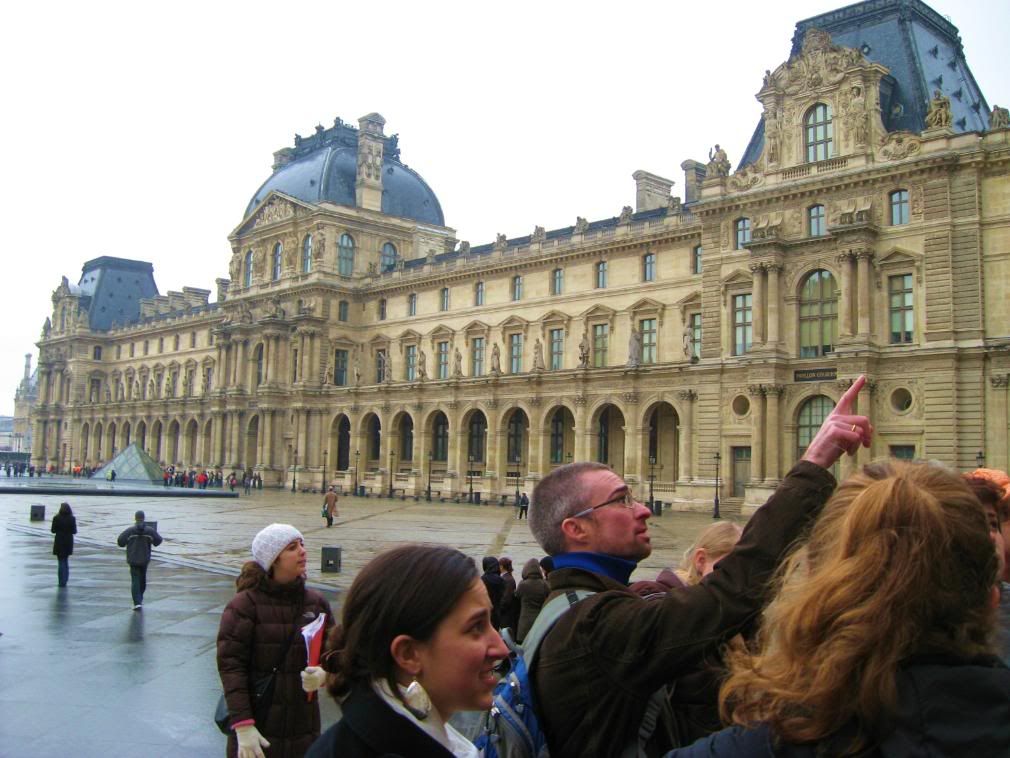
Following the Revolutionary sentiments of the late 18th century, the Louvre became a museum open to the public in 1793.
The next series of pictures are from the stunningly overdecorated private apartments of Napoleon III, who lived in the Louvre.
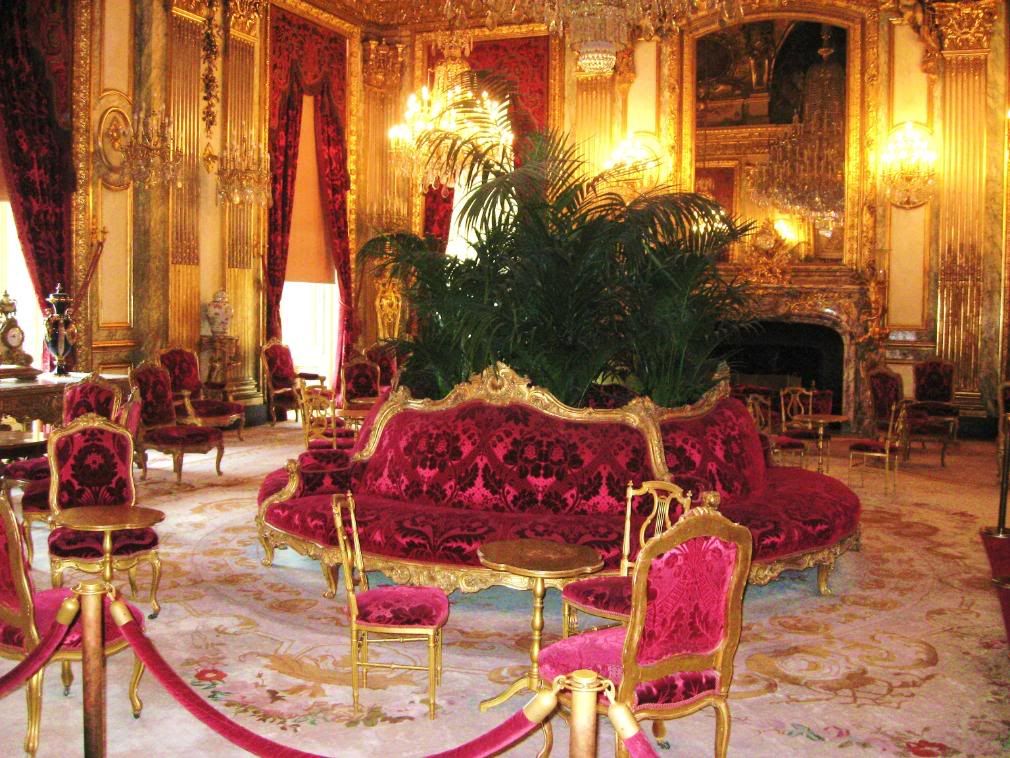
I love the giant circular couch! This would have been the main reception room for visitors to the palace.
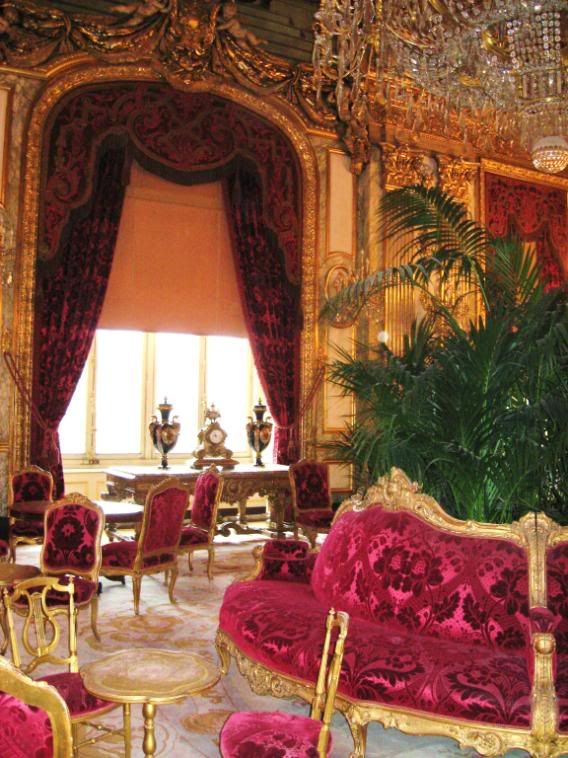
Everything in these rooms glitters. It's mesmerizing.
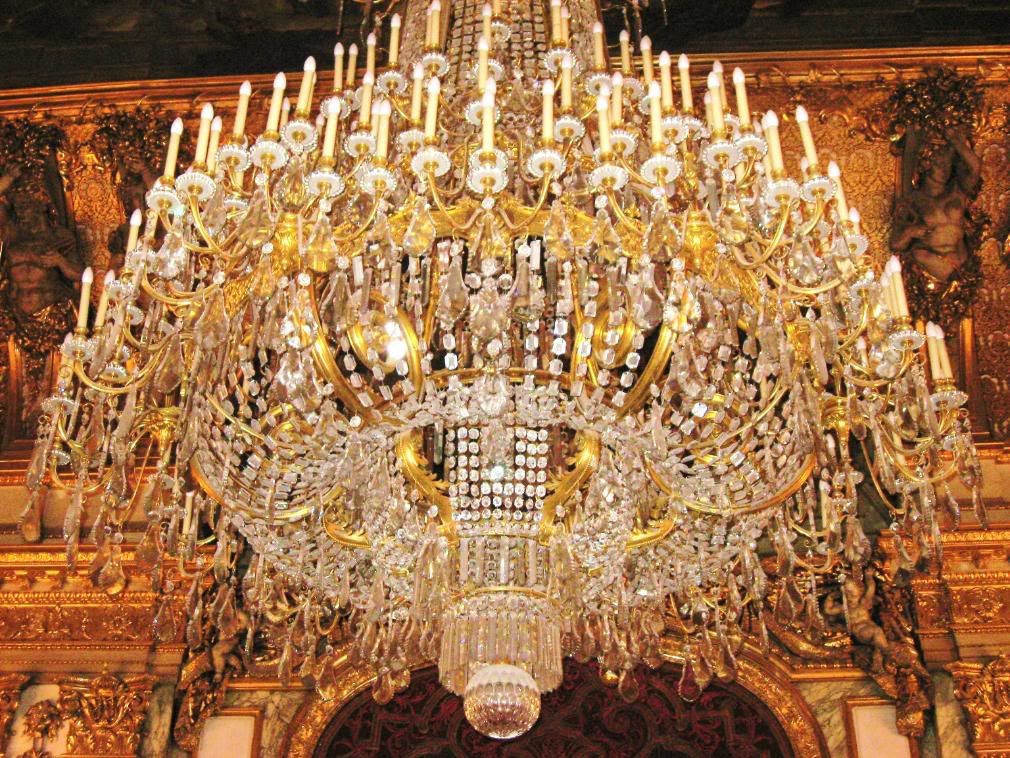
I have a not-so-secret love of opulent chandeliers.

These chairs are so unusual and cool. Paul explained that they were made this way so that three women could sit on it simultaneously and whisper gossip to one another without looking conspicuous. Facing them away from each other also allowed room for the giant skirts to drape over the edges of the chair.
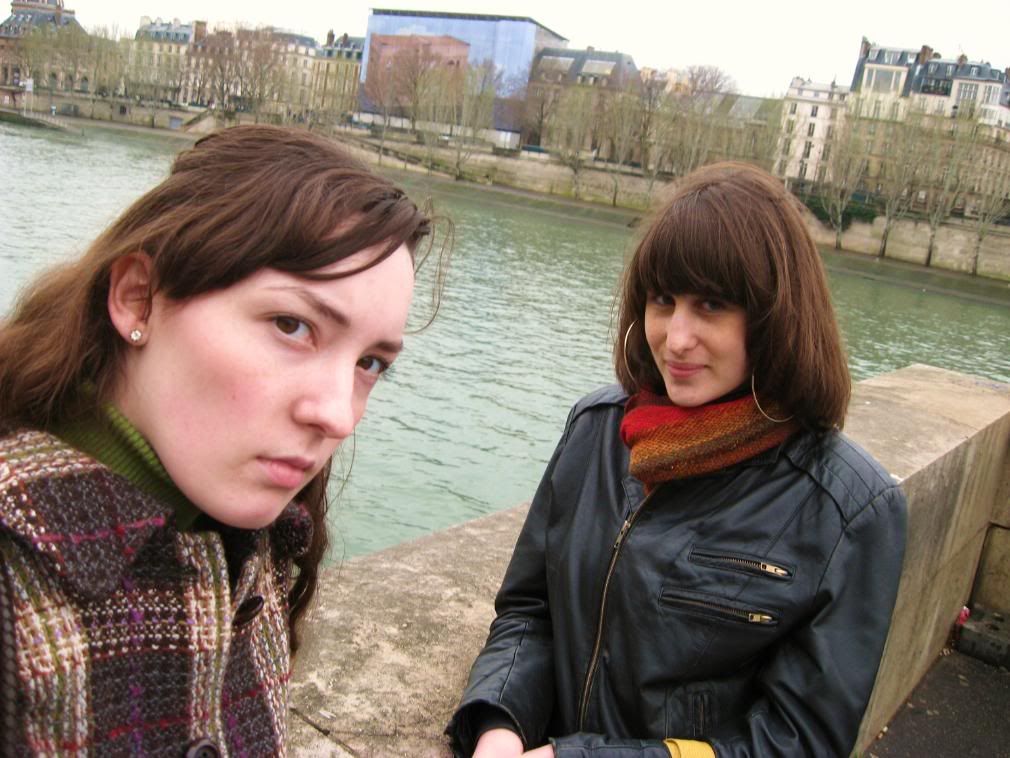
Across the street from the Louvre is the Seine River.
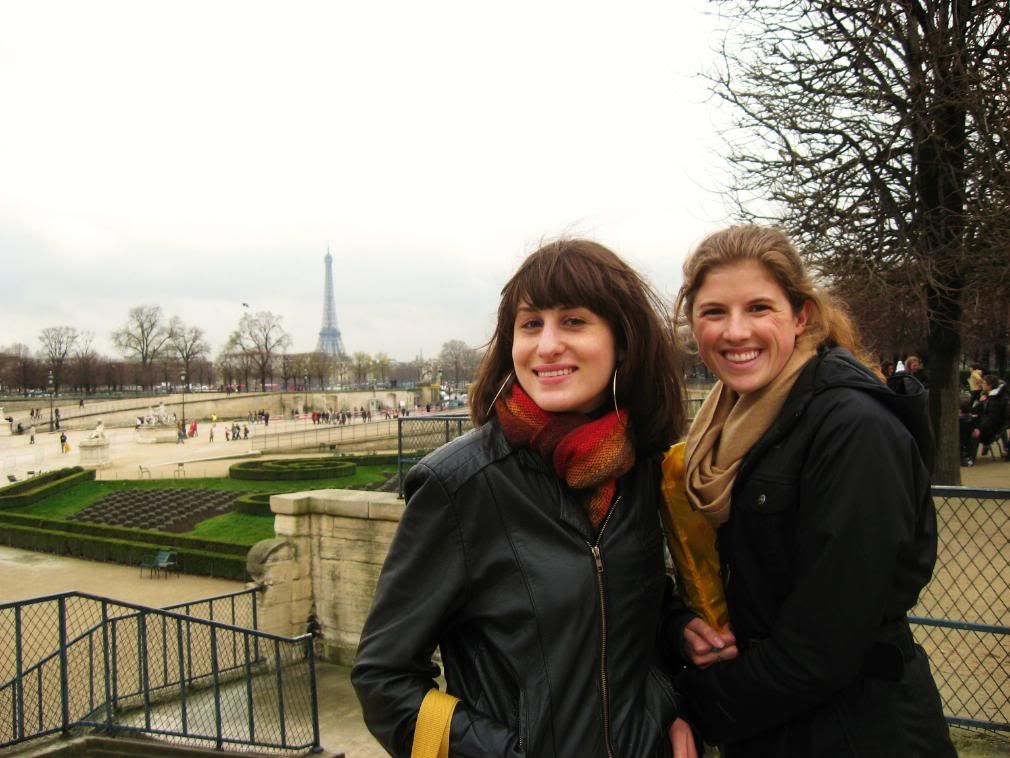
We love pictures where we can sneak the Eiffel Tower into the background just to remind people that we're in Paris.
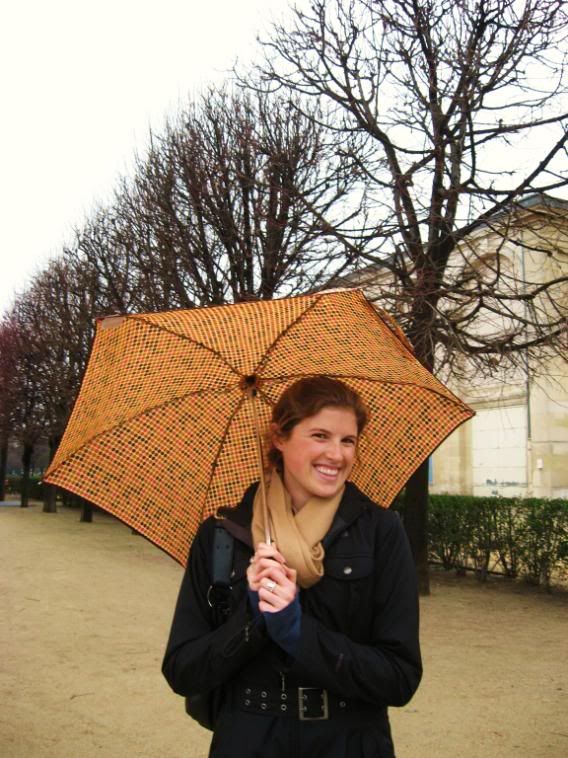
Molly was dying for a picture where she could look cute with her parapluie.
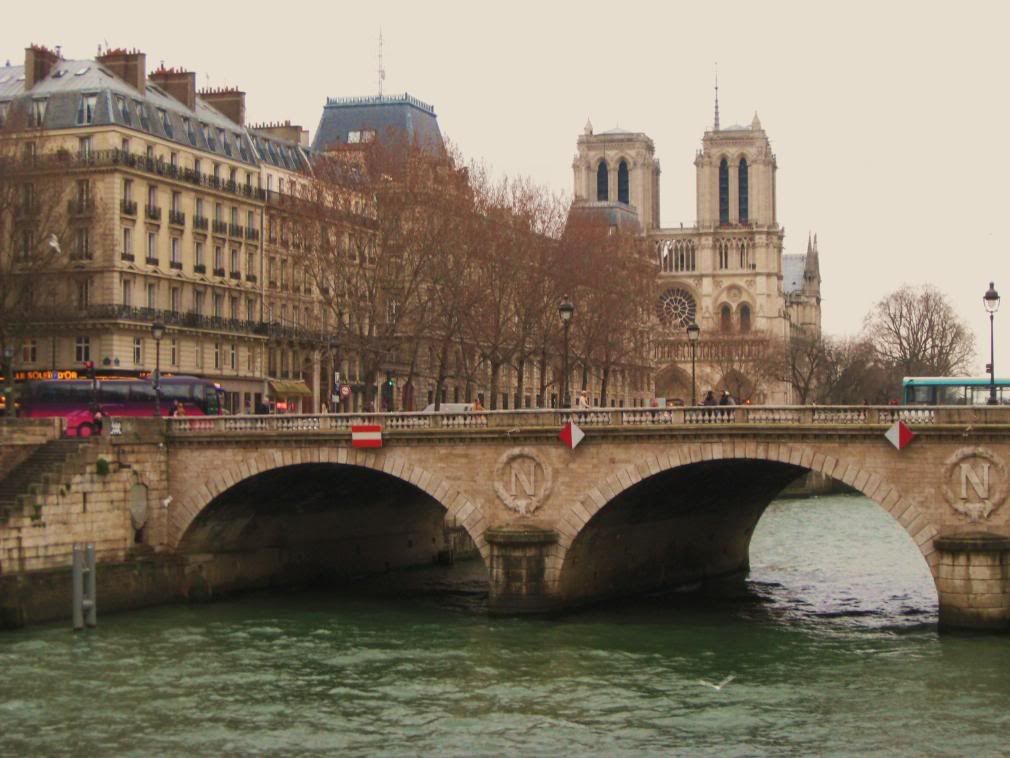
Hey look, my first view of Notre Dame!
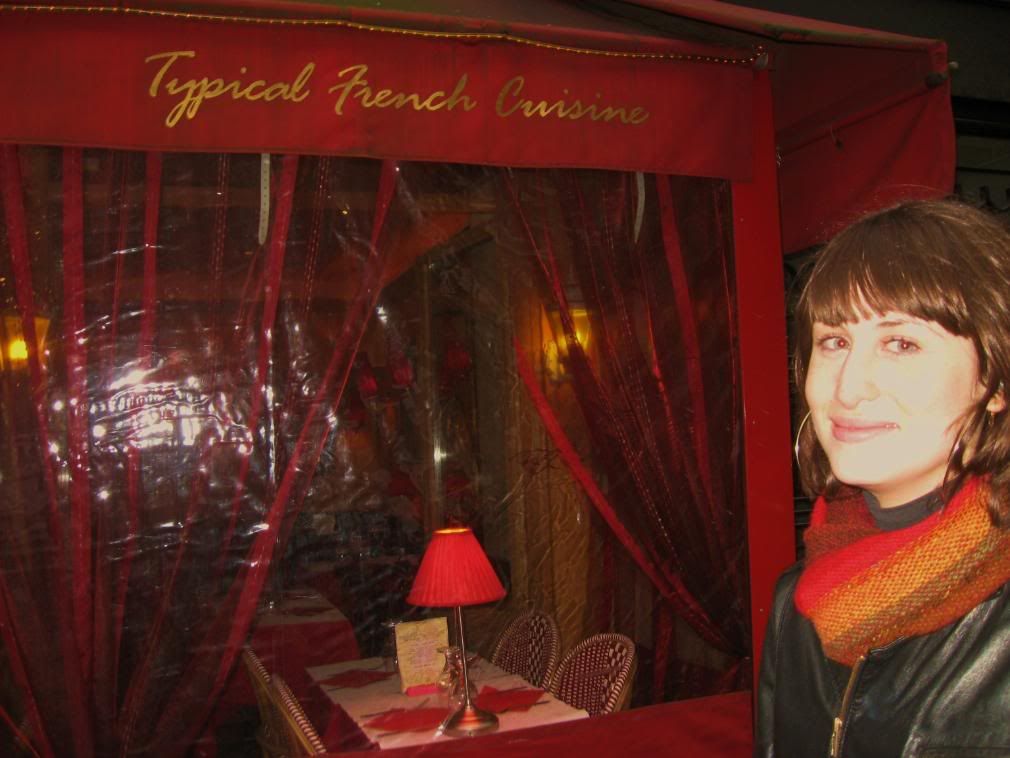
The advertising on the side of this restaurant is awesome.
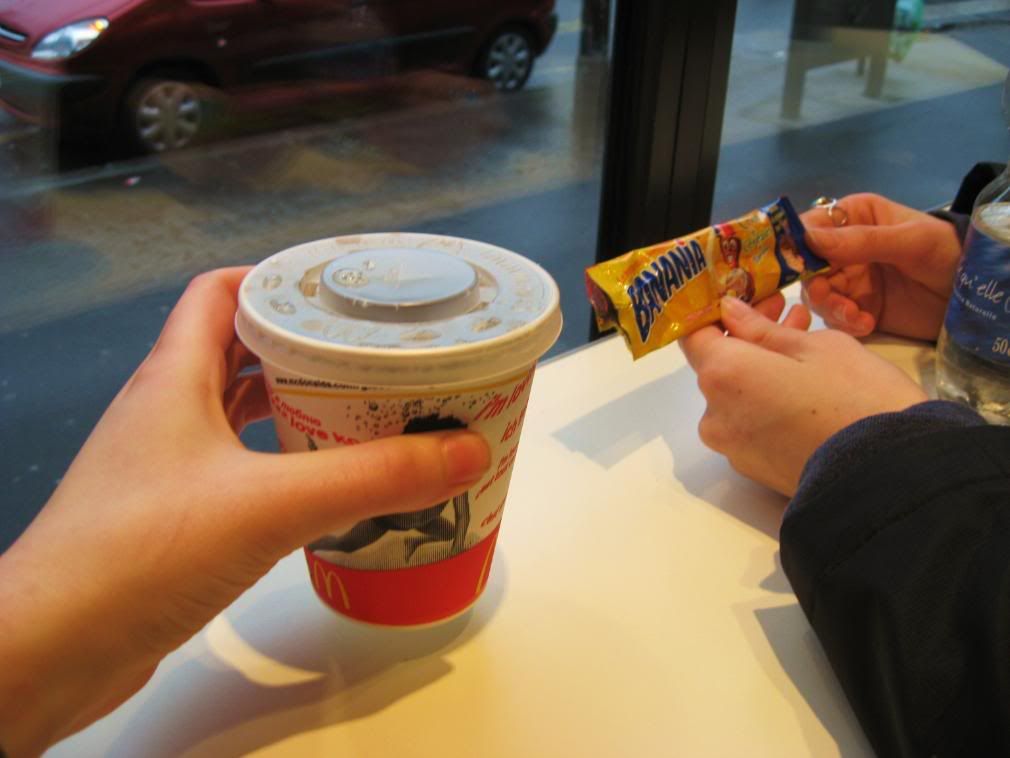
Our day ends with our first visit to Le MacDo. Elizabeth tried some kind of hot chocolate that also possibly had powdered banana and/or wheat in it, it was hard to tell from the packaging. I got a diet coke-- when they ask if you want the "petite" size, they're not kidding!
Then I walked myself several blocks in the wrong direction and it was dark before I found my way home, because I have zero sense of direction. The end!

